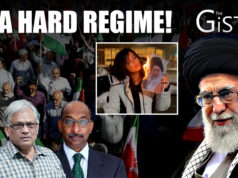What was special about the military parade China held on Sept 3 to mark the 80th anniversary of the victory over Japan in World War II?
“If you look at the world from Beijing’s perspective today, there is increasing, military and economic hostility, especially from the West, led by the U.S.,” said Anushka Saxena, China scholar at the Takshashila Institution in Bengaluru.
“And in such a scenario, it becomes very important for something like the parade to come off as a message from China, that look, we are pulling out the big guns. We have them, we can use them, and most importantly, the Chinese people have the spirit and the resilience to be able to deal with whatever’s to come.”
Saxena was answering questions on The Gist, analysing the big takeaways from the parade attended by no less than 26 heads of state. Of course India’s Modi was not present, given the need to respect Japan’s sentiments, and most Western leaders stayed away.
But Saxena believes China is also telling its friends and allies that in case of need, the People’s Liberation Army and all its air and sea branches can be deployed to aid and assist. This is something sections of China’s academic community have articulated as well.
“They’re communicating to countries like the US that you can never achieve this level of mission, honor and discipline. And these are big guns, and you know, you should be afraid of them. And that’s exactly what the weapon system on parade achieved.”
But China has not fought a war in more than 40 years (1979 against Vietnam) and doubts remain about the fighting ability of the average Chinese soldier.
Saxena’s view is that China would prefer staying out of direct involvement … something like what the world saw in the case of Pakistan during Operation Sindoor.
“In fact, Chinese commentators during the skirmishes between India and Pakistan … were calling Pakistan’s arsenal made in China and to a great degree, rightfully so. You saw ground based air defenses, and HQ9 (missiles) specifically made for Pakistan.”
Tune in for more in this conversation with Anushka Saxena of the Takshashila Institution.
Thirty eight years in journalism, widely travelled, history buff with a preference for Old Monk Rum. Current interest/focus spans China, Technology and Trade. Recent reads: Steven Colls Directorate S and Alexander Frater's Chasing the Monsoon. Netflix/Prime video junkie. Loves animal videos on Facebook. Reluctant tweeter.




